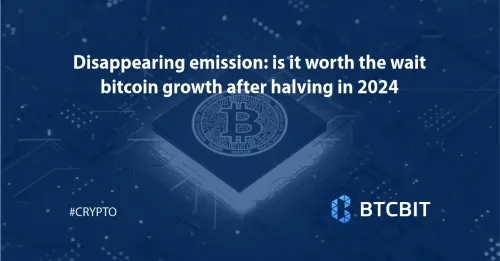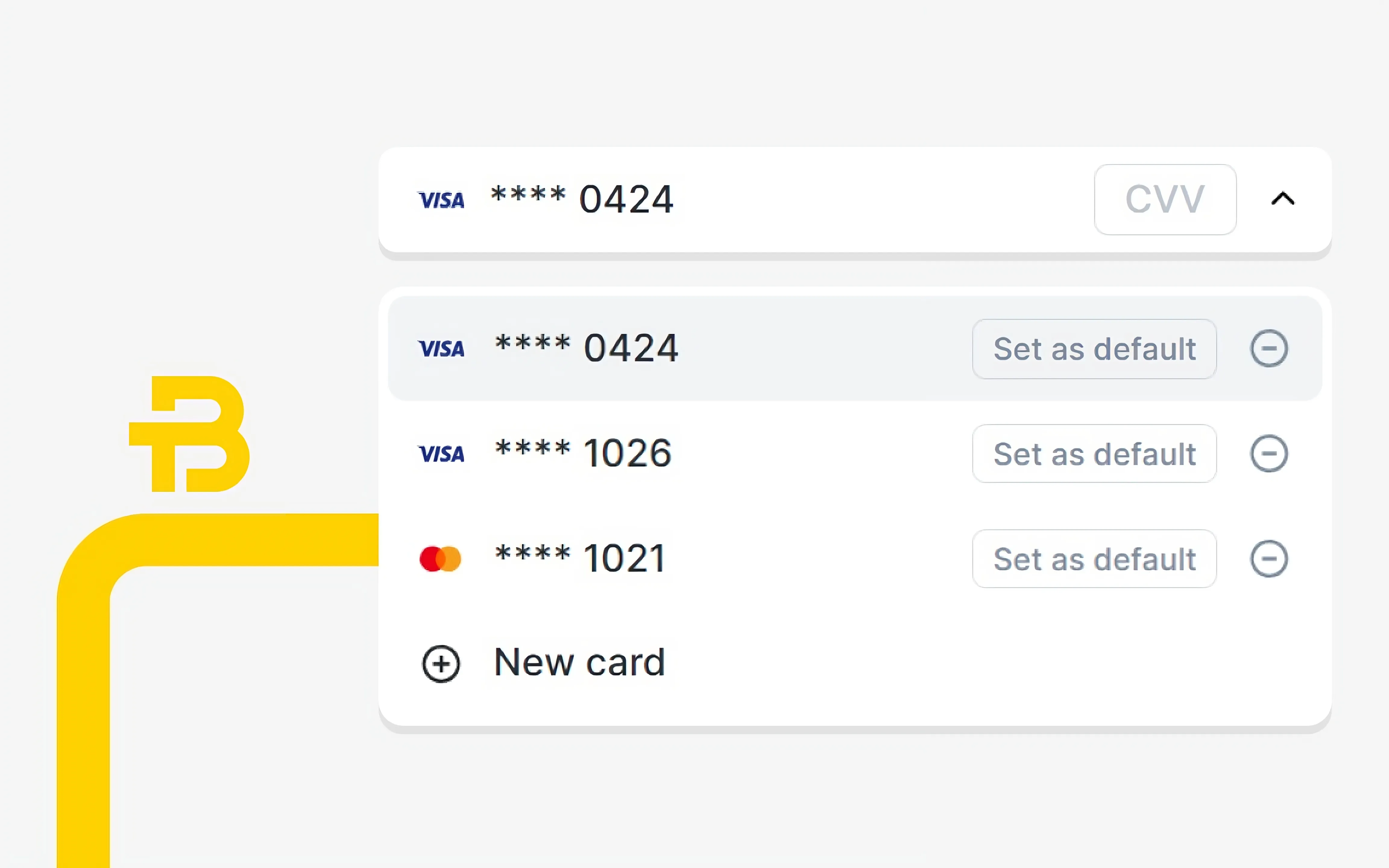
Disappearing emission: is it worth the wait bitcoin growth after halving in 2024
10 min
The new crypto winter continues to rage on the market. How will the 2024 halving affect the price of bitcoin and are there anti-halvings?
The crypto-currency market continues to show good resilience and avoids a new large-scale collapse, despite the troubles falling on all sides. However, users who have not experienced previous crises on their own account are nervous and are trying to predict a quick and miraculous deliverance, after which the crypt will fly up again. Among the reasons is halving, that is, another halving of the Bitcoin block reward, expected in the spring of 2024.
Despite the fact that the next halving is more than a year away, there are high hopes for it. After all, after the previous three halvings, bitcoin showed growth, but this is a trend. But it is not in vain that they say that “after” does not always mean “due to”. Let's remember how the previous waves of growth were docked with the halving of the reward.
• The first rise of bitcoin occurred in May-June 2011, long before the first halving. It was cut down by the first MtGox hack and the price crashed from $32 to a few cents.
• The first time the block reward was reduced was in November 2012, when 10.5 million BTC were mined - exactly half of the maximum provided by the algorithm. The subsequent rise of bitcoin was two-stage: to $256 in May 2013 (half a year after the halving) and to $1241 in November 2013 (one year after the halving). And so the trend began.
• Since 2014, however, bitcoin has fallen into a long stagnation that lasted almost four years. Despite the gradual maturation of the market, the industry has been weakened by internal conflicts, including around the maximum block size. Against the background of these showdowns, the second halving in July 2016 went almost unnoticed. And only by the fall of 2017 did the stars converge again: the main conflict was resolved, and the popularity of cryptocurrencies reached the level of access to large regulated exchanges. In November 2017, against the background of the launch of CME and CBoE futures, Bitcoin touched $20,000 and again fell into the crypto winter.
• The third and so far the last Bitcoin halving occurred in May 2020, at the height of the coronavirus pandemic, which was accompanied by a collapse in the global economy and all markets. Again, we had to wait more than a year before taking off to new records: Bitcoin reached the last historical maximum of about $69,000 in November 2021, and before that it reached $65,000 in April. But the cycle has repeated itself, and now we are already seeing a more than fourfold drop from historical maximum. However, the previous ones were larger, but the end of the crypto winter is not yet in sight.
The relationship between the rises of bitcoin and the halving really can be traced. Without taking into account a significant error, a year or a half after each halving, BTC reached new highs: in 2013, 2017 and 2021. By months, almost all peaks occur in May and November. Therefore, there is reason to expect similar behavior in 2025.
However, there is another important factor to consider. The impact of halvings on BTC issuance is gradually decreasing. If before the first halving in 2012, 50% of all bitcoins were mined, and between the first and second 25% of the total emission, then by the fourth halving in 2024, 93.75% of BTC, or 15/16, will be mined. After it, the daily issue will drop to 450 BTC, and over the next four years, a little more than 3% of bitcoins will be mined. For four years, from 2024 to 2028, only 656,250 BTC are planned to be mined, that is, a little more than 164,000 BTC per year. A decrease in the emission rate not only almost nullifies the influence of miners on the bitcoin market, but also significantly reduces the impact of the dynamics of issuing new coins on the price.
Anti-halvings
If halvings reduce the rate of BTC issuance and thereby lead to a decrease in the market supply under the condition of constant demand, then the opposite events are inevitable, leading to a surge in the market of large amounts of BTC. They can be called “anti-halvings”, although they have nothing to do with mining and generally issuing new bitcoins.
These bitcoins do not come from nowhere: unlike fiat currencies, the creation of new BTC is completely subject to the mining algorithm. But during the turbulent history of the first cryptocurrency, large amounts of bitcoins have been repeatedly isolated from the market. And this means that they can come back and cause a temporary excess of liquidity, accompanied by a price drawdown.
How many bitcoins can return to the market
Let's single out the largest events, as a result of which the amount of bitcoins comparable to the annual issue can enter the market:
• Establishing control over BTC-e wallets. The Russian-language exchange BTC-e was closed by US intelligence agencies in 2017. Despite rumors and investigations, there is still no reliable information about who controls her backup wallets. They can store tens of thousands of BTC, and a six-digit figure is possible. Unfortunately, accurate forecasts are not possible here, but information about the restoration of access to BTC-e wallets can become a weighty "black swan" for the price of bitcoin. Everything will depend on the details.
• Payouts to MtGOX users. Former MtGOX customers have been waiting for their money back for almost nine years. After all the manipulations with the debts of MtGOX, a little more than half of the 200,000 BTC remained in the accounts of the interim manager out of 200,000 BTC. But this amount, in the case of a one-time sale on the open market, will cause a collapse in quotations. It is possible that payments will start in 2023. In this case, the current supply of BTC will enter the market in four to five months, or eight to ten months after the 2024 halving.
• Return of stolen bitcoins from Bitfinex. In 2016, about 119,600 BTC were stolen from the Bitfinex exchange. Some of the stolen stuff has already been taken out by the hackers, but most is still under their control. If the hackers' wallets are arrested, they will temporarily fall under the control of law enforcement officers, but then they will probably be returned to verified users of the exchange or sold at auction. This event will create a kind of canopy in the market. The amount of BTC still not returned to the market is comparable to the amount left in the MtGOX liquidator accounts.
• Bankruptcy Microstrategy. Financial company and trading software developer Microstrategy is currently the largest holder of bitcoins among public companies in the United States. In the fall of 2022, she owned 129,700 BTC, otherwise the amount may even increase by the end of the year. In case of serious financial difficulties, and even more so the bankruptcy of the company, all these bitcoins will be sold, on the open market or in private transactions. Even according to current data, Microstrategy's reserves are about 80% of the annual issue after halving.
• Termination of WBTC. Wrapped Bitcoins or WBTC are tokens on the Ethereum blockchain used in DeFi and traded on centralized and decentralized exchanges. They are fully backed by bitcoins frozen in a smart contract. As of December 25, 2022, there are 184,505 BTC in this contract. And this is already more than the annual emission after halving. Strictly speaking, they cannot be considered completely isolated from the market, since a freeze on the Bitcoin blockchain is replaced by a turnover on other blockchains. And yet, if the WBTC smart contract is closed for some reason, real bitcoins, not wrapped bitcoins, will enter the market.
• Closing of the Grayscale GBTC fund. Few people think about how many bitcoins are actually under the control of corporations. The sensational stories with the purchase and sale of bitcoins by Apple, Microstrategy and other public companies are actually not the largest investments of legal entities in cryptocurrencies. Several times larger amounts are held in the reserves of cryptocurrency trust funds. The largest of them is GBTC, launched by Grayscale Investments back in 2013. The oldest and largest of the cryptocurrency funds will celebrate its anniversary in six months. But nothing in the market lasts forever. Now GBTC units are trading at almost a third of the price of the bitcoins that back them. And this means that investors doubt the future of the fund and are waiting for a further fall in bitcoin. As of December 2022, there are more than 635,000 BTC on the GBTC balance. And this is almost equal to the amount of BTC emission for four years after the halving! And without taking into account the reserves of other cryptocurrency funds, which are likely to burst before GBTC.
• Return of Satoshi Nakamoto. With each passing year, the event, which is constantly used to scare beginner cryptors, looks less and less likely. But it is still possible. The creator of Bitcoin is still the largest single holder of the first cryptocurrency. In the event that Satoshi coins return to the market, this will be the largest of the “anti-halvings”. He is credited with owning about 1.1 million BTC. This is almost two-thirds of the total supply remaining at the end of 2022 (about 1.75 million BTC), and corresponds to the supply for the next six years, that is, until the beginning of 2029.
The impact of "anti-halving events" will depend on the stage of the market at which they are implemented. The appearance of 100,000 BTC in a market where a bearish trend reigns will lead to a solid drawdown of the rate, comparable to the consequences of the collapse of FTX, and will bounce back for several months. While in a strong bull market, a similar amount will be eaten up in a few days and will only slightly slow down growth.
After doesn't mean due to
Let's summarize. If we follow the available calendar statistics, new peaks of bitcoin after the 2024 halving can be expected in May or November 2025. You can safely mark these dates on the calendar and make optimistic forecasts about them. After all, the growth after the previous three halvings is already a historical fact.
But even if new peaks confirm the trend, it will be more of a “self-fulfilling prediction” effect or proof of market cyclicality than the impact of the halving. The slowdown in issuance has little effect on liquidity, and with each subsequent halving, this impact will increasingly tend to zero. Therefore, it is worth recalling the fundamental thesis of technical analysis: future price movements may be similar to the past, but they will never be repeated. Moreover, the situation on the market over the past three years has become very complicated. The darkening of swan feathers is also becoming a trend.
The cryptocurrency market is increasingly correlated with the traditional ones, this is a retribution for the growth in popularity and the entry of large investors. And the increasingly harsh rhetoric of regulators and clearing the field for state digital currencies overlap economic and technical growth factors. However, the markets follow psychology more than logic, so the expectation of growth by the mass of investors can overpower other factors, and the miracle will come true.
Other news
More newsOne Single Step
Learn more



